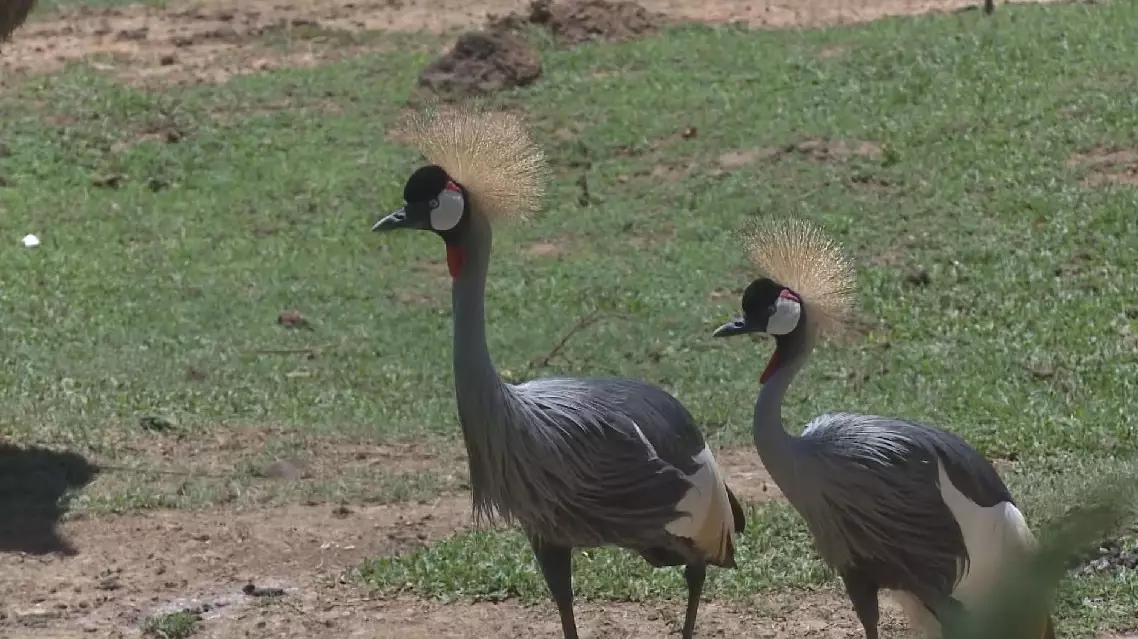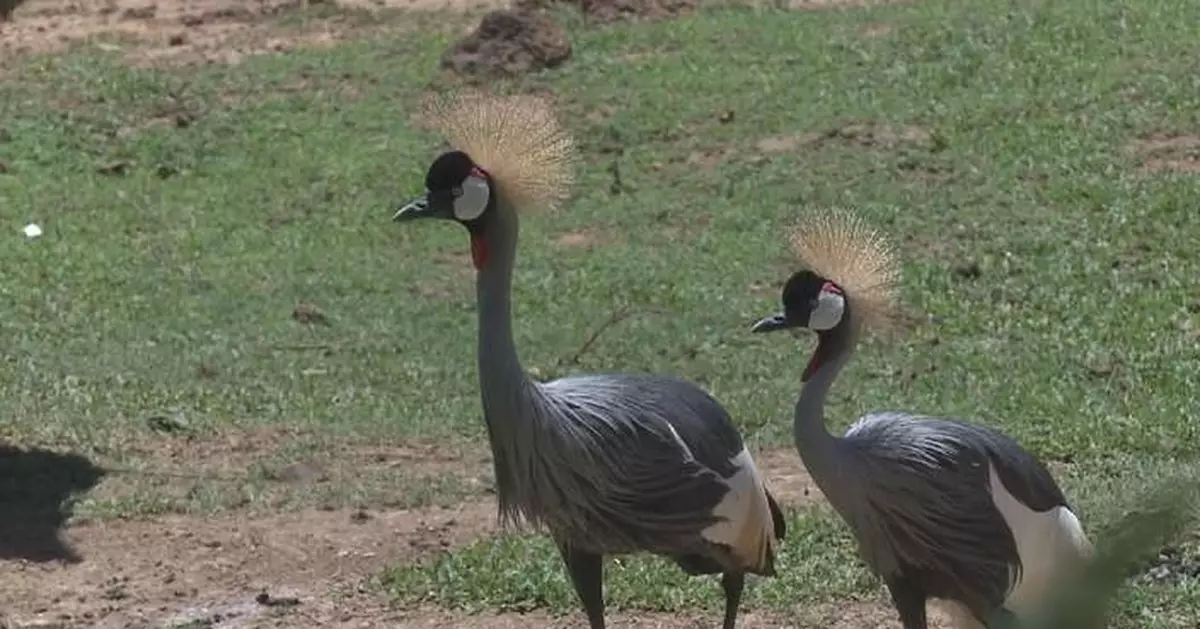Uganda's national bird, the grey-crowned crane, is facing a grave threat of extinction due to the combined pressures of climate change and human activity, putting this iconic species at significant risk unless urgent action is taken, conservationists warn.
Standing over a meter tall, the graceful grey-crowned crane is a striking presence in many of Africa's wetlands. However, in Uganda, where its population remains relatively strong, securing food and suitable breeding grounds has become increasingly difficult.
Extreme weather patterns, including rising temperatures across East Africa, are drying up wetlands and disrupting the broader ecosystem, leaving the cranes with fewer food sources.
"We've had a lot of weather variations and drastic weather changes in the country. The seasons have changed and all this affects both the birds and the insects," said Judith Mirembe, chairperson of Uganda Women Birders.
Over the past three decades, Uganda's wetlands have shrunk dramatically, declining from about 15 percent of the country to just 8 percent today. Some conservationists warn that if current trends continue unchecked, this figure could drop to as low as 1 percent by 2040.
While climate change is a major factor, the growing demand for farmland and urban expansion is further reducing the cranes' chances of successful breeding.
"When you destroy wetlands, some of them have laid eggs and you're destroying the eggs as well, so how can you talk about growing the population of the crane when we are not allowing the eggs to hatch. Some people when they land on the eggs, they go and make omelet,” said Bashir Hangi, communication and public relations manager of the Uganda Wildlife Authority.
Despite being Uganda’s national bird, the grey-crowned crane is still targeted by hunters, and some communities exploit it for traditional medicine. In response to these growing threats, the Uganda Wildlife Authority is working with the International Crane Foundation to protect the remaining populations.
"For example, this year we are in Insingiro [District] because there are quite a number of them there in the wetlands of Masha, and we are raising awareness about that. And communities have since started appreciating the local leaders. You know, some people look at it like any other bird so they don't care. When it comes to wildlife, people just kill. I mean, it (wildlife) doesn't need to do anything to them. So we are saying, look, this bird is very important for us," said Hangi.
With their numbers dropping from approximately 35,000 three decades ago to around 22,000 today, conservationists urge stronger protections and greater awareness to prevent further decline.

Uganda's national bird, grey-crowned crane, faces growing threat of extinction




















































